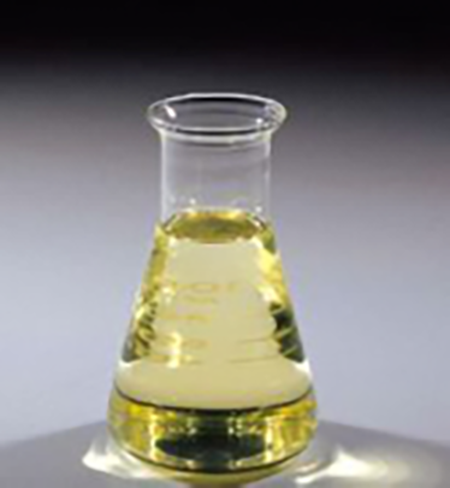The Pharmacological action of lipoic acid
Apr 8,2022
Introduction
Lipoic acid, with the molecular formula C8H14O2S2, is an organic compound that can be used as a coenzyme to participate in acyl transfer in the metabolism of substances in the body[1], and can eliminate free radicals that lead to accelerated aging and disease. Lipoic acid enters cells after being absorbed in the intestines in the body, and has both fat-soluble and water-soluble properties.
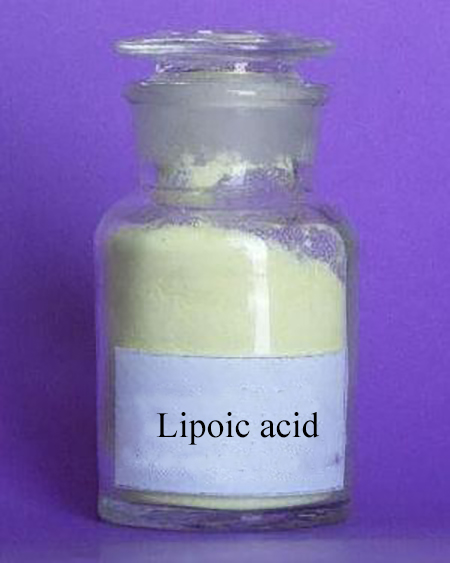
Picture 1 Lipoic acid powders
As a coenzyme, lipoic acid plays a role in two key oxidative decarboxylation reactions, namely, in the pyruvate dehydrogenase complex and the α-ketoglutarate dehydrogenase complex, catalyzing the generation and transfer of acyl groups. Lipoic acid can accept an acyl group with the acetyl group of pyruvate, forming a thioester bond, which then transfers the acetyl group to the sulfur atom of the coenzyme A molecule. The dihydrolipoamide that forms the prosthetic group can be oxidized by dihydrolipoamide dehydrogenase (requiring NAD+) to regenerate oxidized lipoamide. Alpha-lipoic acid contains a disulfide five-membered ring structure, with high electron density, significant electrophilicity and the ability to react with free radicals, so it has antioxidant properties, high health care functions and medical value (such as anti-oxidant). fatty liver and lowering plasma cholesterol). In addition, the sulfhydryl group of lipoic acid is easy to undergo redox reaction, so it can protect the sulfhydrylase from the poisoning of heavy metal ions. Lipoic acid is widely distributed in nature, especially in liver and yeast cells. Lipoic acid and vitamin B1 are often present in food. The human body can synthesize. Humans have not been found to have lipoic acid deficiency.
Pharmacological action
The drug is a cofactor for the pyruvate dehydrogenase complex, ketoglutarate and amino acid hydrogenase complexes[2]. This drug can inhibit lipid oxidation in nerve tissue, prevent glycosylation of proteins, inhibit aldose reductase, and prevent the conversion of glucose or galactose into sorbitol. Animal experiments show that this drug can prevent the development of diabetes, promote the utilization of glucose, and prevent neuropathy caused by hyperglycemia. Lipoic acid is easily reduced to dihydrolipoic acid after entering the human body, both of which can promote the regeneration of vitamin C and vitamin E, and play an antioxidant role. The drug can also increase intracellular glutathione and coenzyme Q10 and chelate certain metal ions.
Precautions
1. Use with caution: Not yet clear.
2. Effects of drugs on children: This drug injection contains benzyl alcohol and should not be used in neonates, especially premature infants.
3. The effect of the drug on pregnancy: Animal experiments have not determined the teratogenicity of this drug, and there is no sufficient human research. Pregnant women should not use this medicine.
4. The effect of the drug on breastfeeding: breastfeeding women should not use this medicine.
5. This medicine is incompatible with sugar solution, Ringer's solution, solutions containing disulfide bonds and solutions that can react with sulfur groups or disulfide bonds.
6. This medicine should be taken on an empty stomach when it is orally administered.
7. The active ingredient of this medicine is sensitive to light, and the ampoule should be taken out of the box immediately before use. The prepared infusion should be wrapped in aluminum foil to protect from light, which can be kept stable for 6 hours. The container should also be wrapped in aluminum foil during infusion.
8. The speed of intravenous injection should be slow. If the injection is too fast (more than 50 mg/min), head bloating, tension headache and dyspnea (shortness of breath) may occasionally appear, which can be relieved on their own.
9. This drug needs to be administered for a long time. For severe patients, intravenous administration is recommended for initial treatment.
10. For patients with spontaneous gastrointestinal neuropathy, parenteral administration should be used for initial treatment to ensure absorption and maintain stable blood concentration.
11. If there is no improvement after 2 weeks of parenteral administration, vitamin B1 should be added to the treatment plan, 100-300 mg per day, orally, for 2 weeks.
12. If there is a temporary aggravation of neuropathy, antidepressants or tranquilizers can be used to treat pain.
13. If skin allergy occurs, the drug should be discontinued
Reference
1 Ma Xiaoli, Study on the effect of ɑ-lipoic acid combined with epalrestat in the treatment of peripheral neuropathy caused by type 2 diabetes, Journal of Contemporary Medicine 2017
2 Wang Xiaohan, Clinical observation of lipoic acid capsules in the treatment of central nervous system demyelinating diseases China Medical Engineering 2017
- Related articles
- Related Qustion
- Synthesis of Alpha lipoic acid Sep 23, 2021
Alpha lipoic acid (ALA), chemical name: 1,2-dithiolan-3-pentanoic acid,Lipoic acid contains a five-membered disulfide ring structure, which has significant electrophilicity and the ability to react with free radicals.
Carboxymethyl cellulose (CMC) is obtained after carboxymethylation of cellulose. Its aqueous solution has the functions of thickening, film-forming, bonding, water retention....
Apr 8,2022API-Bromopropyne is an organic compound with a molecular formula of C3H3Br, a molecular weight of 118.96....
Apr 8,2022APILipoic acid
62-46-4You may like
- Lipoic acid
-
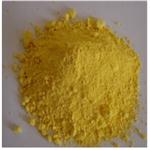
- $8.00 / 1kg
- 2024-05-06
- CAS:62-46-4
- Min. Order: 1kg
- Purity: 99.99%
- Supply Ability: 100Tons
- Lipoic acid
-
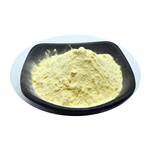
- $0.00 / 1KG
- 2024-04-28
- CAS:62-46-4
- Min. Order: 1KG
- Purity: 99% HPLC
- Supply Ability: 1000KG
- α-thioctic acid
-
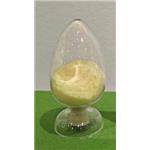
- $0.00 / 1KG
- 2024-04-09
- CAS:62-46-4
- Min. Order: 1KG
- Purity: 99%
- Supply Ability: 360T




